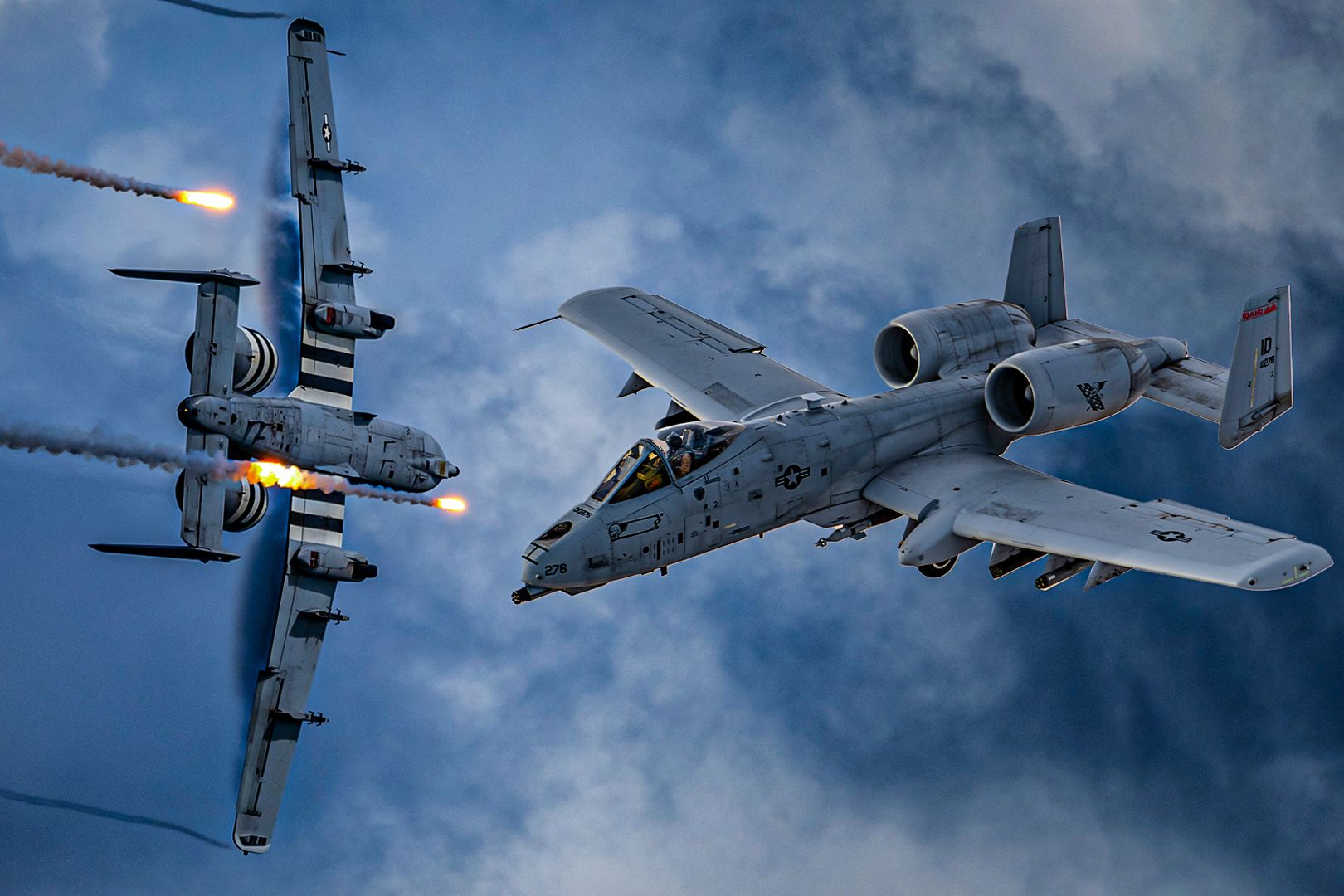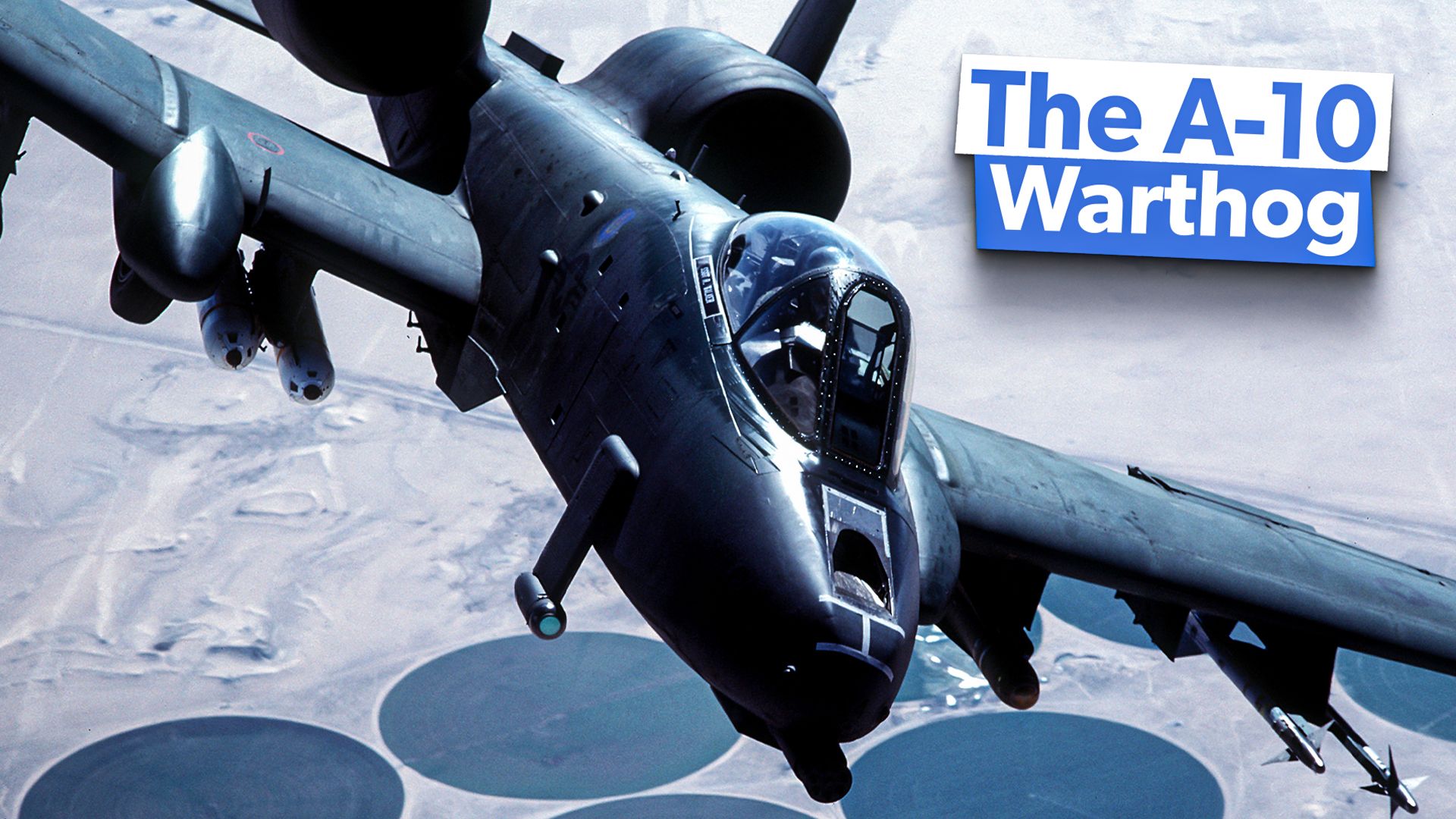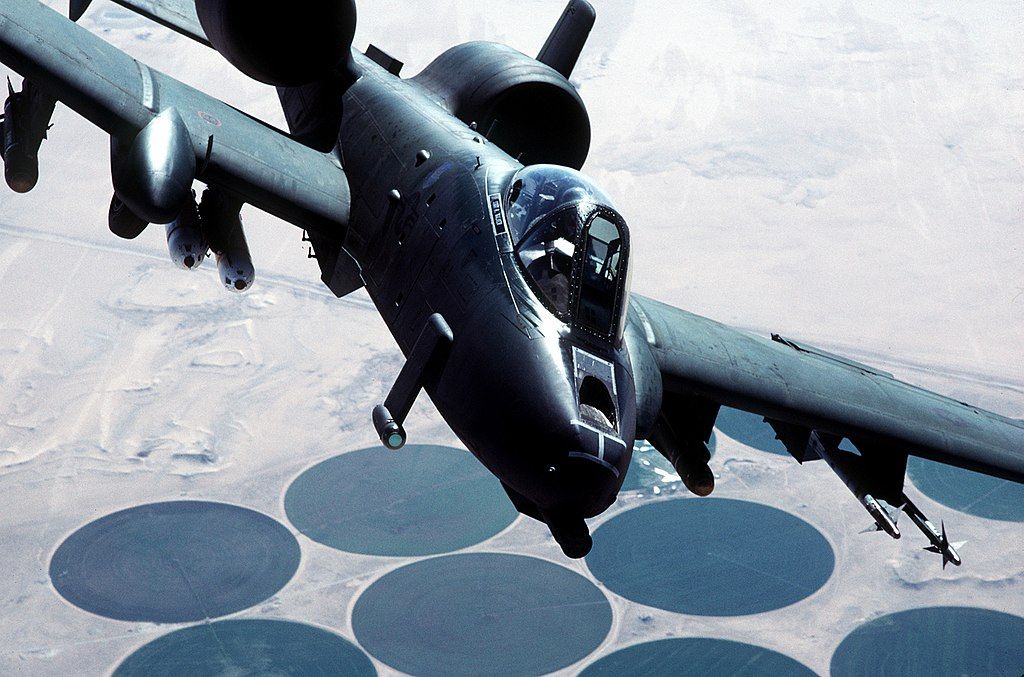Summary
- The A-10 Warthog, like the F-16, has received continuous upgrades over its 50-year career.
- Upgrades since the late 1970s include GPS navigation in the mid-1990s and Precision Engagement upgrades in the 2000s.
- The current focus is on modernizing the A-10C with new weapons systems for future cyber warfare environments.
Like the F-16 Fighting Falcon, the Republic Fairchild A-10 Thunderbolt II (known much better and more affectionately as the “Warthog”) is a quinquagenarian, having already celebrated its golden anniversary, i.e. its 50th birthday. One might think that, other than the fact that they’re both US Air Force (USAF) aircraft, the similarities between the “reptilian” Viper and the “mammalian” Warthog end there. After all, the former is a sleek, supersonic air superiority fighter plane, whilst the other is an ungainly-looking (I prefer that label to “ugly”) subsonic ground attack aircraft.
However, there’s an additional common thread between these two iconic USAF warbirds. Just as is true of the F-16, the A-10 hasn’t remained frozen in time, but rather has been continually upgraded and improved over the years in order to keep its metaphorical razor’s edge deadly sharp. Simple Flying shall now take a closer look at some of these upgrades.

Related
How Maneuverable Is The A-10 Warthog?
The A-10 Warthog is renowned for its massive cannon, but how well can it maneuver?
Late 1970s and early 1980s: the “Pave Penny,” LASTE, etc.
The first upgrade to the Warthog took place in 1978, when the aircraft was a relatively young six years of age, in the form of the Lockheed Martin AN/AAS-35(V) Pave Penny, a laser receiver pod which sensed reflected laser radiation from a laser designator. The Pave Penny was based on the earlier AN/AVQ-11 Pave Sword laser tracker which had been used on a few USAF McDonnell Douglas F-4 Phantom IIs during the Vietnam War. The Pave Penny is now being discontinued in favor of more capable advanced targeting pods, but the system more than proved its worth in battle many times over, starting with the Warthog’s first “blooding” (and establishment of its fearsome reputation in the minds of the American public) during the 1991 Persian Gulf War AKA Operation Desert Storm.
By the time the Gulf War rolled around, a couple of other upgrades had also been installed in the A-10. In 1980, the warbird became the beneficiary of an internal navigation system. Later that decade, the Low-Altitude Safety and Targeting Enhancement (LASTE) upgrade provided computerized weapon-aiming equipment, an autopilot, and a ground-collision warning system.
Late 1990s and early 2000s: GPS and Precision Engagement
In this day & age, we as a society are so spoiled by the convenience of Global Positioning System (GPS) navigation aids for civilian and military applications alike, it’s hard to imagine life without it. However, it wasn’t until 25 years ago (the midlife of the A-10’s career, as it were) that the Warthog began receiving the GPS; as a bonus feature, the planes received a new multi-function display. This would prove to be fortuitous timing, with the Global War On Terror (GWOT) kicking off two years later.
|
Specs |
A-10 Warthog |
|---|---|
|
Length |
16.26 m (53 ft 4 in) |
|
Wingspan |
17.53 m (57 ft 8 in) |
|
Height |
4.47 m (14 ft 8 in) |
|
Max Takeoff Weight |
22,950 kg (50,600 lb) |
|
Powerplant |
2 × General Electric TF34-GE-100A turbofans |
|
Maximum Speed |
706 km/h (439 mph, 381 knots) |
|
Service Ceiling |
13,600 m (45,000 ft) |
From there, according to Military.com:
“In 2005, the entire A-10 fleet began receiving the Precision Engagement upgrades that include an improved fire control system, electronic countermeasures, upgraded cockpit displays, the ability to deliver smart bombs, moving map display, hands on throttle and stick, digital stores management, LITENING and Sniper advanced targeting pod integration, situational awareness data link or SADL, variable message format, or VMF, GPS-guided weapons, and upgraded DC power. The entire A-10 fleet has been Precision Engagement modified and now carries the A-10C designation.”
The Present: Cyberwarrior Cyber-Warthogs
The Warthog was birthed back when the mere notion of cyber warfare was relegated to the realm of science fiction. As Olawale Abaire of Warrior Maven elaborates in an article published back in March:
“The A-10C is receiving a suite of enhancements aimed at modernizing its capabilities. These upgrades include improved avionics, weapons systems, and survivability features. The focus is on ensuring that the A-10C can operate effectively in the increasingly sophisticated electronic and cyber warfare environments expected in future battles.”
“A key component of the A-10C’s upgrade is the integration of new weapons systems. This includes the addition of advanced precision-guided munitions and updated targeting pods, which will enhance the aircraft’s ability to engage moving targets with greater accuracy. The upgrades will also allow the A-10C to better support ground forces in complex, contested environments.”
“The A-10C’s avionics and communications systems are being overhauled to improve interoperability with other U.S. and allied forces. This includes the implementation of modern data links and communication networks, enabling the Warthog to share real-time battlefield information with ground troops and other assets in the theater of operations.”
So, whilst the USAF brass continues to attempt to place the venerable Warthog on the retirement chopping block– with a current projected retirement date of 2028 — the plane, true to its aggressive animal namesake, is not content to (channeling Dylan Thomas here) “go gentle into that good night.”


